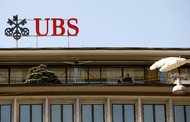Breaking news is always good news for CNN, and April’s ratings are the latest example.
Total viewership was up nearly 80 percent compared with the same month a year ago; among the viewers news advertisers pay to reach, the increase was more than 100 percent.
By comparison, MSNBC was actually down in viewers from the same month a year ago — despite the enormous interest in the Boston bombings — which may say something about how viewers see one of CNN’s news channel competitors.
Meanwhile, Fox News, which did not grow nearly as much as CNN, still had plenty of regular viewers to win in all categories.
In total day ratings for April, CNN jumped to an average 638,000 viewers from 356,000 viewers last year. Among viewers 25 to 54, the age group that news advertisers buy, the increase was bigger, to 228,000 from 109,000.
Fox News’s overall numbers were much bigger, with a total average audience for the month of 1.2 million, up from 1.08 million a year ago, a 14 percent increase. In the 25-to-54 group, Fox was up 2 percent, to 278,000 from 273,000.
MSNBC somehow lost viewers, dropping to 407,000 total viewers from 426,000 a year ago. It had no increase in the 25-to-54 group, staying at 139,000.
One reason may have been that MSNBC viewers turn to NBC network coverage when breaking news is on, and the broadcast network did have the most-watched coverage — and among the most critically praised — for two nights of the breaking Boston story.
But not getting any kind of ratings bump at a time of such intense news interest may also be an indication that MSNBC’s viewers look to that channel for opinion-based reporting instead of straight news reporting.
For example, the network’s flagship morning program, “Morning Joe,” was down 10 percent this April, despite the heavy news. And its strongest prime-time hour, with Rachel Maddow, was down 7 percent in total viewers.
Article source: http://www.nytimes.com/2013/05/01/business/media/cnn-gets-a-ratings-boost-from-boston.html?partner=rss&emc=rss




